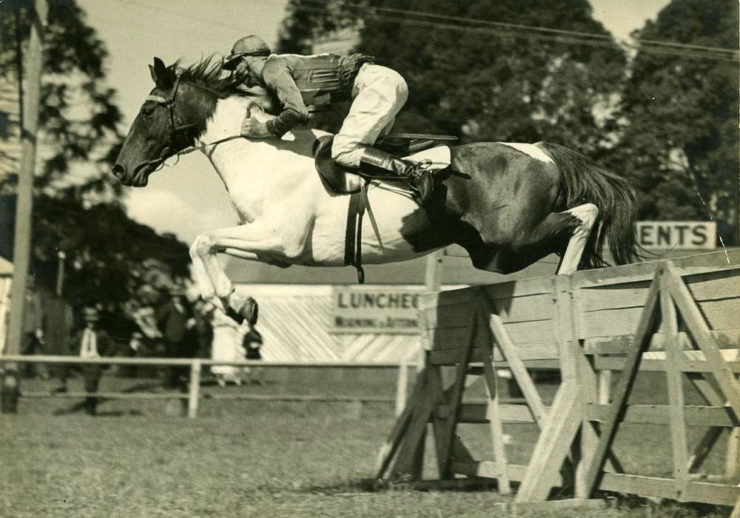Every four years, give or take, allowing for the occasional world war or pandemic, somebody somewhere starts up the old refrain. How can Equestrian be a sport? It’s too easy! You just sit there! Where’s the athleticism? This year there’s a bonus. Celebrity offspring makes the team. Obviously Daddy bought her slot. There’s no way she earned it for herself.
Riding is like writing. It looks much easier than it is. Everybody thinks they can do it if they just get around to it. Dash off some words. Sit on that horse and it carries you around. Simple, right? Easy as pie.
(Ever tried to make a really good pie crust? Yeah.)
Riding in its most basic form is just sitting on the horse. But. The horse is alive, breathing, and has its own ideas and agenda. If it’s well trained and inclined to be cooperative, it will do what you ask, even if you’re very inexperienced. It will, like adaptive text, figure out what you mean and hopefully get it right.
It’s also moving or has the potential to move. That means you’re not just sitting on a stationary object. You have to move along with it, and balance on top of it, and try not to interfere with the horse’s own balance. Not too bad at a walk, but at higher speeds, it gets interesting.
You aren’t just holding on with your hands. You can’t do that and still steer. Gripping with your legs gets tiring really fast and may actually squirt you out of the saddle. You have to balance up there. Go along with the movement. Be prepared for sudden stops and swerves.
You need serious core strength to do this. If you’re riding right, it’s not your hands that feel the challenge, or your legs once you’re fit. It’s your core muscles and your inner thighs.
Buy the Book


A Spindle Splintered
Now think about elite competition. For purposes of this essay, show jumping, which is the event in which celebrity dad’s daughter has qualified. She has to ride over high fences at a not trivial rate of speed, and make sure the horse not only stays on course but also clears the fences without knocking them down.
There is a tremendous amount of skill involved in literally every step of the ride. How fast to go, when to take off for each jump, how to balance before and especially after. These rides are calculated down to fractions of a stride, and fractions of a second.
And let’s not forget the horse. Horses at this level are serious, serious athletic machines. Their movement is huge, and so is their spirit and their ego. They live to jump. The best ones are doing their own calculations, and making their own decisions. Horse and rider work as a team, but it’s the rider’s job to make sure they stay on course and make the time.
Any rider who makes this level of competition is the real deal. You can’t buy that skill or that sheer raw courage to ride those courses over those fences on a horse of that caliber. It certainly helps to have family funding, because the horses and the sport are very not cheap.
But making the team? She earned that, fair and square. She put in the hours. She mastered the skills. She became a team with her big, powerful, headstrong and brilliant horse. She’s an athlete, and a world-class one.
Judith Tarr has written more novels than she can count, and ridden a whole lot of horses, too. She lives in Arizona with a herd of Lipizzan horses, a collection of cats, and a blue-eyed dog.










